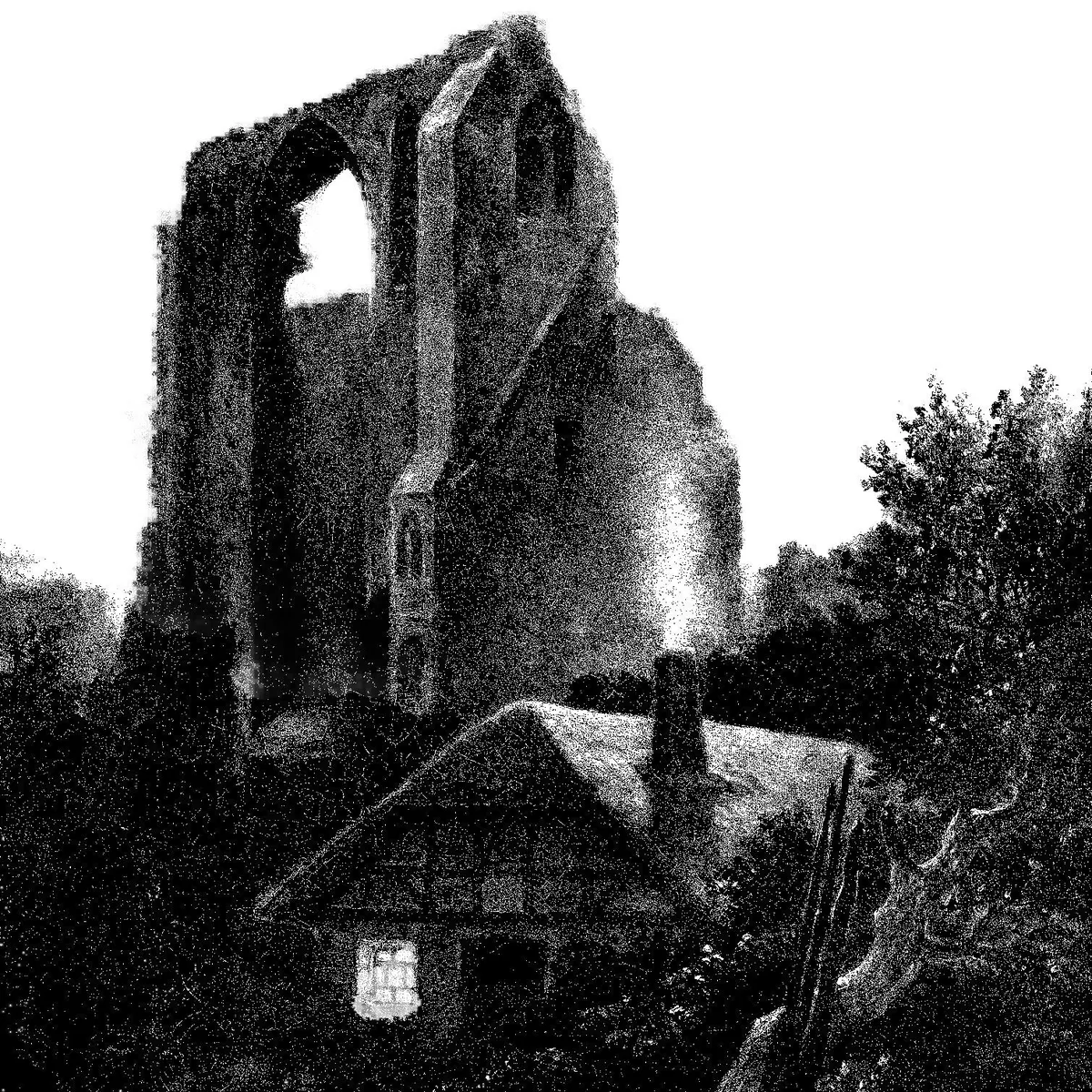
RUINOUS is an ashcan ultralight system based on my earlier project, Ruins & Rogues. I’ll be updating this page every so often as I come up with new ideas for the game.
Character Creation
First, choose one of the following armor kits, which determines your maximum HP and how many spells you know:
- No armor (4 HP) and 3 spells
- Light armor (6 HP) and 2 spells
- Medium armor (8 HP) and 1 spell
- Heavy armor (10 HP) and 0 spells
Second, choose one of the following weapon kits. For flavor, feel free to replace “sword” with “knife” or “bow” with “gun” or anything like that.
- Sword and shield: +2 maximum HP while wielding the shield.
- Sword and bow: Shoot targets from a reasonable distance. Don’t bother to track ammunition, you have plenty.
- Sword and spear: Once per round, when an enemy moves into range of your spear, you can make a free attack against them.
- Sword and wand: You know 1 additional spell.
Here are some examples of spells you might know. Feel free to come up with your own (as long as you run them by your GM before playing).
- Wizard spells: disguise face and hair, illusory [sight/sound], imperfect invisibility, impose [fear/rage], read surface thoughts, vertical-only levitation
- Cleric spells: flash of [light/dark], interrogate corpse, poison or purify drink, repel [fiends/undead], turn sticks to snakes, zone of truth-telling
- Druid spells: become small beast, create indoor weather, enlarge [flora/fauna], speak with [flora/fauna], tangle of [vines/webs], wall of [crystals/ice]
You can cast each spell you know once per day. When you cast a spell, the GM should roll dice to determine how well it goes.
Rolling Dice
Only the GM rolls dice. Whenever the GM is uncertain, the GM rolls a d6; the higher the result, the better the outcome for the PCs.
If the result seems unlikely, the GM may roll a second d6 and take the new result if it seems more likely. The GM may not roll a third d6.
Typically, all you need to know is that a 1-3 is bad and a 4-6 is good, but you might break it down further:
- Very bad
- Bad
- Mostly bad
- Mostly good
- Good
- Very good
Combat
Each round, first each enemy gets a turn, then each player. On your turn, you can move a reasonable distance and take one action. Exception: Surprised enemies do not go first.
No dice are rolled in combat. Weak attacks deal 1 damage, normal attacks deal 2 damage, strong attacks deal 3 damage, and attacks against an especially vulnerable target deal 4 damage.
Since damage is static and the odds may be stacked against you, you should be clever with your items and your environment. If it isn't outright deadly, a trap or other environmental hazard deals 2 (weak), 4 (normal), or 6 (strong) damage.
Damage and Recovery
When you take damage, you lose that much HP. If you run out of HP, you die.
A good long rest restores you to your maximum HP. Up to twice per day, you can take a short rest to regain up to half your maximum HP.
Monsters
Monster statblocks look like this: "Name. HP, weapon (attacks x damage tags)."
For example: "Dragon. 32 HP, claws (2x3) or fire breath (6 heavy blast)." 2x3 means the dragon can make two claw attacks per action that deal 3 damage each; attack tags are explained below.
Monsters have HP as follows:
- Easy: 2, 4, or 6 HP
- Medium: 8, 10, or 12 HP
- Hard: 16, 24, or 32 HP
Here are some attack tags:
- Blast: The attack strikes all targets within whatever area of effect the GM deems reasonable.
- Body: The attack strikes all targets that the attacker moves into or otherwise touches on its turn.
- Heavy: The attack costs two actions: one to ready the attack and one to attack next turn.
- Stun: The target takes 1 damage if it moves and 1 damage if it acts on its next turn.
FAQ
Q: What happens when you gain or lose armor in the middle of an adventure?
A: The GM should make a ruling based on whatever feels right in the moment. Maybe you wait to adjust HP until the next rest, or maybe you adjust it right away; maybe you only adjust maximum HP or maybe you adjust current HP too.